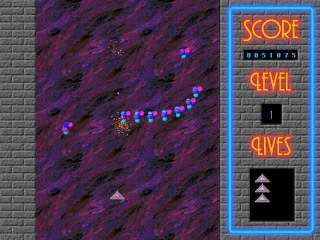Apple on Tuesday unveiled an updated MacBook – its “next generation” laptop which first saw the light of day in 2015. Is the new Mac right for you?

First, a quick refresher on the MacBook: Apple’s newest laptop design debuted a year ago. The MacBook is a very different creature than its Air and Pro counterparts. It’s Apple’s thinnest, lightest laptop, barely heavier than a 10-inch iPad. Equipped with a Retina display, “Force Touch” trackpad and single USB-C interface, used both for power and data transfer.
It’s also Apple’s first laptop to come in different colored cases – since the MacBook, that is. Wait, what?
What’s the difference between this MacBook and the other MacBooks?
Background on the MacBook: This name has appeared before.
Apple first used the MacBook moniker after making the Intel transition in 2006. The MacBook was the Intel-based successor to the venerable PowerPC-based iBook line. The MacBook was positioned as Apple’s consumer laptop model, alongside the MacBook Pro. They’d be joined by the MacBook Air. In 2010 Apple discontinued the MacBook as consumer tastes, improved manufacturing efficiencies and Apple’s marketing efforts pushed the MacBook Air into the consumer market. Since then, Apple’s most affordable laptop has been the MacBook Air.
When Apple reintroduced the MacBook in 2015, they took a very different approach. They bill it as “the future of the notebook.” Instead of a durable system built for use in schoolrooms, they’ve reimagined the MacBook as a thin, elegant, stylish lifestyle computer. Starting with the case, which shows a lot more bling than the rest of the Mac line. So, just like Apple’s other consumer products, the MacBook comes in Space Gray, Silver and Gold, and there’s now a new Rose Gold finish.
The biggest changes are under the hood: The company has replaced the slow 1.1 GHz Intel Core M processor with a 1.2 GHz model built around the sixth generation of Intel’s Core processor architecture (known by its code-name Skylake). It’s also managed to squeeze another hour of battery life, so you can surf the web for about 10 hours without needing to recharge. The new MacBook retains its previous price starting at $1,299.
Apple estimates that graphics performance is up to 25 percent better on this model than last year’s, and the system has faster memory and faster PCIe-based storage, as well. Apple repeatedly emphasized the improved performance of the new MacBook, which is telling: The original didn’t exactly set the world on fire with its extraordinary performance.
Nor, quite frankly, will this model. The MacBook is purpose-designed and it’s not a laptop that should be used by someone who’s really demanding on their hardware. Having said that, this is certainly movement in the right direction, and the MacBook’s raw performance should be more appealing to more users than anyone before.
What’s wrong with the MacBook?
My top advice is to go to an Apple Store and play with the MacBook to see if you like it. The screen resolution is excellent but at 12 inches it’s physically small. If your vision is corrected or if you just don’t like to look at small images and type, you may find the screen’s too small for your needs.
The MacBook keyboard feels different, because Apple uses a different kind of switching mechanism under the key cap itself. I like it more myself, but people generally don’t like disruptions to their sense of touch, so there can be a transitionary period while you adjust to the new keyboard. And if you already have an iPhone 6S or 6S Plus, you’re already familiar with the mechanism of Force Touch, which Apple markets as 3D Touch on those devices – the bottom line is that the trackpad supports more delicate and intricate gestures using force feedback than the multi-touch trackpad on other older Apple laptops.
Besides performance, the biggest overall complaint about the first generation MacBook was its single USB-C port, and this has not changed. Apple’s vision for this computer is as a completely wireless device – connecting to the Internet via 802.11ac Wi-Fi predominantly, but also able to be tethered to an iPhone via Apple’s Handoff technology so you can stay connected anywhere.
The single USB-C port does provide ample bandwidth to connect an external display, external storage devices, exotic networking interfaces and more, but it will require you to invest in bulky, inelegant and ugly cables that will clutter your bag or desk, really disrupting the core design concept of the MacBook, which is as an elegant, diminutive but complete portable workstation.
One passing note: Despite the Skylake underpinnings under the hood, Thunderbolt 3 has not been included in the MacBook: That USB-C port is USB 3.1 only.
Quite frankly, I can’t think of a single practical reason why Thunderbolt 3 needs to be on the MacBook. Apple hasn’t released a single computer with Thunderbolt 3, though PCs began shipping with it months ago. Thunderbolt 3 is great, just not something this particular Mac model needs to be a fully functional system.
This isn’t a review of the new MacBook – I haven’t gotten my hands on one. My top advice to you is to get to an Apple Store and check it out. Decide for yourself if it’s the right machine for you, and don’t worry too much about specs. Figure out if it’s fast enough to do what you need it to, and let that be the basis for your decision.











